Magnesium sulfate, popularly called Epsom salt, has been a subject of interest among gardeners and horticulturists as it boosts plant well-being and growth. Apart from being an additive to essential nutrients like sulfur and magnesium, which are crucial to the health of plants, Epsom salt stimulates vital biochemical processes in them, such as photosynthesis, nutrient absorption, and general well-being. This article discusses the various benefits of using Epsom salt as part of your gardening efforts, giving a broad perspective about its uses and efficiency. The readers will be able to understand how this ordinary compound can help in dealing with common plant deficiencies and improve their blooming and fruiting capabilities, thereby facilitating sustainable gardening practices. By comprehending the science behind Epsom Salt and its practical use, gardeners can open up opportunities for healthy thriving plants.
What are the Benefits of Using Epsom Salt for Plants?
Various benefits offered by Epsom salt help to improve plant health and productivity. Primarily, it raises levels of magnesium in the soil which is critical for plant chlorophyll production and hence photosynthesis. Improved photosynthesis leads to more energy availability for the growth of the plant. Moreover, magnesium helps develop cell walls, making them strong and resistant to environmental changes. Additionally, sulfur, another component found in Epsom salts, is involved in synthesizing proteins, vital amino acids, and enzymes that support other life processes among plants, especially in terms of health. Furthermore, Epsom salt can be used to enhance flowering and fruiting through its role in nutrient uptake that enables plants efficiently absorb essential elements from the soil. Therefore, this multipronged approach to nutrient delivery makes Epsom salt a resource that cannot be understated by both novice and experienced gardeners who aim to get the best out of their crops.
How epsom salt Enhances Nutrient Absorption
The high content of magnesium and sulphur are crucial for various physiological processes thereby enhancing nutrient absorption in plants. For instance, magnesium boosts several enzymes responsible for photosynthesis as well as nutrients uptake, therefore helping nitrogen, phosphorus, and potassium absorption (Kumar et al., 2016). Consequently, this increased enzymatic activity means that plants use nutrients available faster thus encouraging healthy growth (Gupta et al., 2021). On top of these, sulfur contributes toward synthesis of amino acids and proteins needed during plant growth processes (Parveen et al., 2020). Thus, making sure that necessary nutrients are effectively taken by the plant from the soil by improving overall nutrient status while enhancing internal metabolic functions within it is what makes Epsom salt special for more productive plants that undergo a healthy process.
The Role of Magnesium Sulfate In Plant Health
Many important physiological processes within plants are facilitated by magnesium sulfate popularly known as Epsom salts. First, it increases the production of chlorophyll, which is important for photosynthesis, thereby influencing the conversion of sunlight into energy (Chen et al., 2020). Magnesium is an essential component due to its centrality in chlorophyll molecules and reports suggest that plants should have a magnesium content between 0.2 and 0.5% dry weight for optimal photosynthesis.
Also, magnesium sulfate occurs in the synthesis of nucleic acids and ATPs (adenosine triphosphate) which are important carriers of energy in a plant. Healthy plants, on average, have ATP concentrations ranging from two to four millimolars, hence ensuring efficient metabolism (Rao et al., 2021). It will also enhance the availability of essential nutrients like nitrogen and phosphorus that improve the development of the root system, such as the recommended available soil phosphorous concentration being 15-25 ppm for optimal root growth.
In conclusion, magnesium sulfate application not only promotes nutrient absorption but vital processes as well, thus ensuring maximum health and productivity in plants (Wang et al., 2019). Moreover, it has been proved that treatment with magnesium sulfate often leads to the improved ability by plants to undergo better handling tough environmental conditions, which results from sustainable ways gardening systems.
Boosting Flower and vegetable Growth with epsom salt
Epsom salt or magnesium sulfate has been widely studied for its effects on flowering plants such as flowers and vegetables, among others. The raising levels of magnesia during flower formation in terms of photosynthesis helps to increase flowering response. In addition to this, it contributes towards nutrient uptake; e.g. absorption of nitrogen required for leafy growth while allowing phosphorus needed during flowering or fruiting through facilitating the absorption of phosphorus among other mineral nutrients (Partey et al., 2018).
For best outcomes, a commonplace amount to use is around one tablespoonful of Epsom salts every foot of plant height dissolved and applied to the soil or as a foliar spray. This has been found to support flower growth and quality and increase vegetable yields, with reports showing that fruits from such crops usually have improved size and taste. Therefore, gardeners looking towards maximizing aesthetic value, as well as productivity for their plants, can adopt Epsom salt in their normal fertilizer program.
How Much Epsom Salt Should You Use for Different Plants?
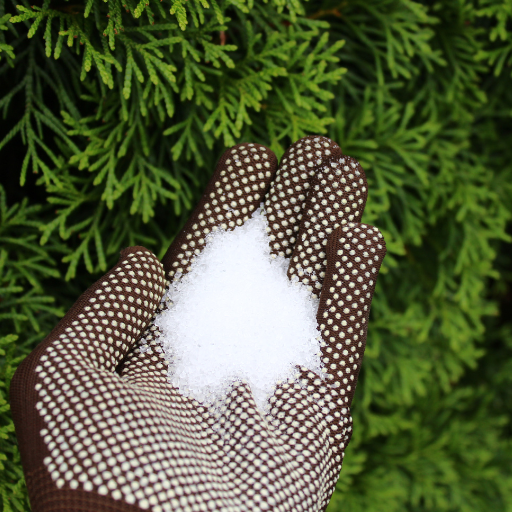
Specific requirements related to plant type and growth stage must be considered when determining the appropriate amount of Epsom salt to apply for different plants. For most flowering plants, a general rule is 1 tablespoon of Epsom salt per foot of plant height once every four to six weeks during the growing season. As for vegetables such as tomatoes and peppers, a similar dosage of 1 tablespoon per foot of height usually works well, especially if applied at planting time and again during the flowering phase.
For container plants, slightly lower amounts of Epsom salt might serve; one teaspoon in a gallon mixture suffices for monthly watering. Furthermore, a diluted solution comprised of over-fertilizing risks is preventable with 1 teaspoon per gallon of water for seedlings. Besides these common instructions, it is very necessary to ensure that your plants are observed upon any need for adjustments in terms of frequency or quantity to reflect their health conditions and environment (FDA). Additionally, continuing soil testing can help you refine your nutrition strategy by providing information about nutrient levels that still need adjustment through application procedures.
Recommended amount of epsom salt for tomato plants
Usually recommended amount of Epsom Salt for growing tomatoes is between 1-2 tablespoons per ft. tall plant. Application should be done at critical growth stages—initially at the planting stage and then during the blooming phase. For even distribution throughout the root system without causing root burnage it may be best to dissolve the Epsom salts in water prior to application. Dissolving some Epsom salts in water monthly could also increase magnesium take up by mature tomato plants resulting into better fruit development and overall plant wellbeing (Fulmer et al., 2009). In addition, Epsom salts, when applied, should be dissolved into water in order not to cause burns on roots as well as ensure an even nutrient supply (treatments) all over the garden beds while considering both foliage health together with yield rates on the plantations. The use of Epsom salt with tomatoes involves monitoring the overall health of plants and soil nutrient levels for applying as necessary since over-using might have detrimental effects on gardens.
Using epsom salt with pepper plants
When it comes to using Epsom salts with pepper plants, most recommendations are similar to those given for tomatoes. Approximately 1 tablespoon per foot is a good dosage that can be put into effect when planting and flowering takes place (Fulmer et al., 2009). This helps to provide essential magnesium and sulphur for healthier leaves and better fruits. Applying Epsom salts in water to prevent root burnage would help facilitate their distribution through the garden beds evenly (treatments). It is also important that you check out any plant or soil testing guidance that tells how many times a year a gardener should apply more nutrients (Fulmer et al., 2009). Over-fertilizing may cause more harm than good; thus, it is important to monitor your soils and crop conditions accordingly (FDA). Regular soil testing will help maintain the right balance of nutrients for optimal pepper plant growth.
Right Dosage for flowers and potted plants
To prevent the nutrients from overloading and yet maintain the general health of the plant, it is necessary to follow the exact prescription when applying Epsom salt to flowers and potted plants. They say that one should mix one gallon of water with one tablespoon of Epsom salt solution to apply once in a month. You can use a reduced amount of 1 teaspoon per quart of water for small pots or individual plants. The solution needs to be applied evenly especially if you are dealing with pots which have different nutrient levels. Regular monitoring, as well as adjustment according to observed growth patterns and soil nutrient levels, will ensure the best health and blooming performance for flower gardens as well as container plants.
How to Apply Epsom Salt in Your Garden?
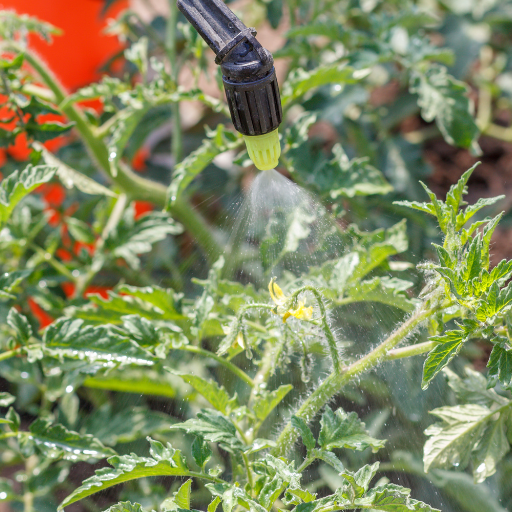
When using a tablespoon of Epsom salt per plant, it is important to follow a precise approach to ensure optimal results. First, dissolve one tablespoon of Epsom salt in a gallon of water to create a nutrient-rich solution. Apply this solution at the base of the plant allowing for thorough soil absorption. During the growing season, magnesium-deficient plants benefit from this application method as Epsom salt improves the uptake of nutrients resulting in healthy growth. Additionally, monitoring plant health and soil conditions are essential to determine how often you need to do this so that you don’t over-fertilize or under-utilize this useful compound. Regular evaluations of plant performance can guide adjustments in application rates, leading to maximum flowering and superior vitality.
Using a tablespoonful of epsom salt per Plant
Using a tablespoonful of Epsom salt for every single plant would require precision to obtain optimal results it. To make this possible, begin by mixing one tablespoonful of Epsom salts into one gallon full of water, thus creating a nutritionally rich mixture. This should be applied at the base part where it gets well absorbed by the soil as opposed to other places because some parts have less mineral content than others and thus will not be effective when sprayed Therefore magnesium deficiency plants benefit from such an approach since Epsom salts make them absorb nutrients that result into their health growth; besides, it is mandatory to see how well your plants do with time because some soils are capable while others cannot favor such gardening methods without any interaction between plants themselves through which they get all necessary minerals back into their tissues over again during which period
Guidelines for Diluting epsom salt with Water
While diluting Epsom salt using water, much emphasis should be given on exact measurements so as come up with an efficient solution. Use a normal ratio of 1 tablespoonful Of Epsom salts for every medium-sized pail full Of water, which allows for proper solubility and nutrient availability. The mixture should be stirred thoroughly, ensuring that the salt is totally dissolved and uniformly spread throughout the solution. For localized applications, lesser amounts can be reduced; this might involve using a quart of water mixed with one teaspoonful Of Epsom salts as it facilitates more directed treatments. When you mix it up make sure to use it at once because those are its most active hours, any other storage would result in lessened returns due to salt crystallization. After application always check plant responses to adjust dilution ratios according to specific growth requirements and developments of certain plants. Soil testing can also assist in customizing the dilution so that it effectively works on your soil’s nutritional needs while at the same time being less harmful on the plants themselves
The Best Time of Year to Incorporate Epsom Salt in Your Garden
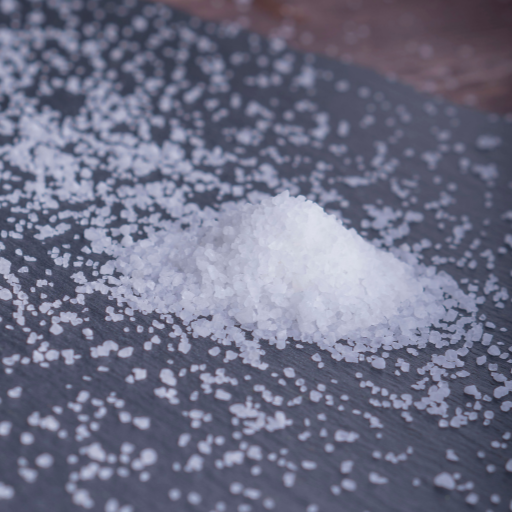
When growing seasons are starting, for instance during spring and early summer months, adding Epsom salt to your garden is most advantageous. This is because in these periods the majority of plants undergo a growth spurt and hence take in more nutrients.In spring, such could aid in encouraging the development of strong root systems with corresponding improved chlorophyll production, which is essential for photosynthesis. The amount should be enhanced when it comes to summer, especially if we talk about some vegetables like tomatoes and peppers since they respond well to magnesium supplementation.The application of Epsom salt following heavy rains and during dry spells can help counteract magnesium leaching forces that result in fluctuating nutrient availability.
Spring Applications for Early Growth
The first days of spring after the last frost has melted down are ideal for beginning applications of Epsom salts. Frequently, it is advised to mix 1 tablespoonful of Epsom salt with 1 gallon of water before applying as a foliar spray or soil drench bi-weekly throughout early stages of growth. This timing takes advantage of the heightened metabolic activity in plants, facilitating efficient absorption of magnesium and sulfur both important components promoting early leaf development and increasing overall plant vigor. There should be evaluations done on plant responses regularly so as to adjust application frequencies and concentrations depending on different crop species needs while preventing potential nutrient imbalances. Also combining other agronomic practices such as soil testing plus rotation with epsom salt applications will result into synergism giving more yields from gardens.
Summer Use for Peak Season Performance
Epsom salt can be used during the summer season to improve productivity and performance among other crops at their peak growth stage.Every 4 – 6 weeks, apply Epsom Salt to get maximum benefits associated with its magnesium components, thereby enhancing the photosynthesis process and general metabolism.Such concentration may be applied via foliar spraying or root zone targeting over a one-gallon water solution.
It is equally important that changes in temperature, humidity and other factors affecting nutrient absorption be put into consideration. In instances of extreme heat, applications may have to be increased in order to relieve stress for plants especially those with magnesium deficiency symptoms like interveinal chlorosis or stunted growths. When combined with a balanced fertilization program and proper irrigation management Epsom salt provides a healthy base that enables the production of high-quality yields at the peak of summer. Soil health and plant response assessment should form the basis for any modification on application strategies aimed at maintaining optimum levels of nutrients.
Autumn Preparations for Next Year’s Growth
As autumn sets in, some crucial steps need to be taken to ensure maximum productivity in your garden or agricultural land next year. The first step involves conducting a thorough soil health assessment which may include pH testing, nutrient levels, and organic matter.The next step will involve introducing materials such as compost or cover crops after one has established what needs to be done from a fertility perspective based upon results from soil tests conducted during fall season.
Secondly, it is recommended that management of crop residues is done by removing or incorporating remaining plant material into the soil. This method not only lowers pest populations but also brings back nutrients to the soil as residues decompose. Further still, putting in place cover crops can guard against erosion, check weed growth and increase organic matter content in soil.
The last step is planning for the next year’s crop rotation. Choosing a variety of crops after planting this year’s plants can interrupt pest life cycles and maintain soil nutrient levels. These practices must be combined skillfully in autumn to ensure rapid growth and high yields when new planting begins next season.
Can Overuse of Epsom Salt Harm Your Plants?
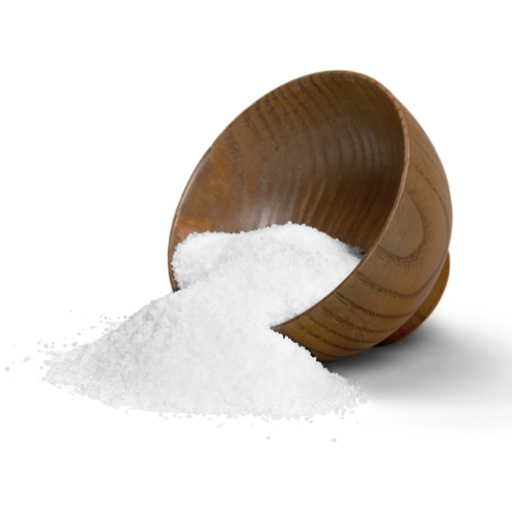
Using too much Epsom salt, which is mainly magnesium sulfate, could damage your plants. Magnesium is essential for photosynthesis and general plant health but overuse may result in nutrient imbalance. At the same time, excess magnesium can prevent calcium and potassium absorption thus leading to deficient supply of nutrients. Moreover, Epsom salts contribute sodium and sulphate into the soil in high quantities, thereby raising salinity and destroying both soil structure and microbiota. The best way to avoid this is by following the recommended application rates as well as carrying out regular soil tests for monitoring nutrients levels while applying only what is required of magnesium.
Visible Indicators that there are Excess Salts in the Soil
Excessive salts in the soil are associated with some obvious signs of potentially damaging impacts on plants’ health. One sign that stands out is leaf burn where tips and margins turn brownish and crispy. Another one is stunted growth, whereby plants will appear shorter with wilting due to excess salts, which hinder water uptake as well as nutrition absorption necessary for the survival of these plants. There may also be the absence of flowers or fruits, especially when soils are highly salty; hence, reproductive processes become very difficult because excessive salinity stresses them out. Besides, excessively gritty or crusted soils may indicate soluble salt accumulation pointing out a disturbed interaction among soil nutrients due to any kind of an imbalance here. Regular checks plus proper amendments will help correct these problems hence restoring good soil.
Correcting Magnesium Deficiency or Overuse
Effectively correcting magnesium deficiency in plants would require applying soil amendments such as Epsom Salt (magnesium sulfate), which allows rapid absorption because it is easily available for uptake by roots. Depending on the severity, the recommended application rate ranges from 1-2 tablespoons per gallon of water used if this solution should enhance desired effect through evenly spreading out all over affected areas Soil testing is important so that accurate information about how much magnesium is in the soil can be obtained and then apply the correct steps to take care of such deficit.
On the other hand, to deal with magnesium overuse means that there should be a reduction in how often Epsom salt will be applied and allowing natural leaching through periodic watering for removing surplus salts from growing media. Additionally, including crops that absorb magnesium into rotation may help with this problem. Routine soil tests should inform management decisions to ensure levels of magnesium remain optimal for healthy plants thereby preventing any poisonous effects, which might occur as a result of an imbalance in nutrients. Moreover, organic matter amendments improve soil structure while also increasing its fertility by enhancing nutrient retention capacity in soils that facilitates better uptake of nutrients than before.
Frequently Asked Questions About Epsom Salt in the Garden
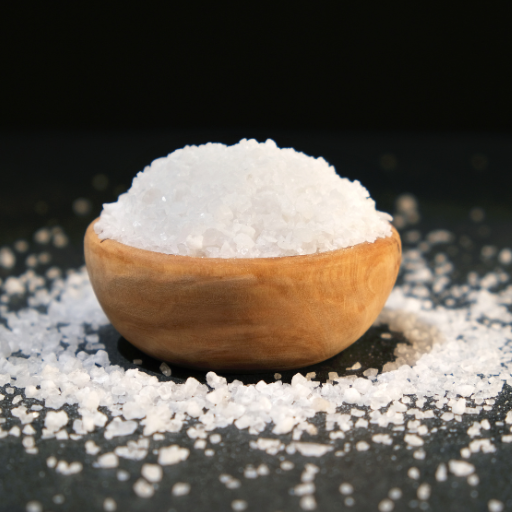
Epsom salt is normally used in gardening to provide magnesium, which is an important nutrient for plants. Pale leaves and poor fruit production are some of the symptoms that can be alleviated by using Epsom salt. However, it should be applied rationally because its excessive use leads to nutrient imbalances. Soil tests carried out before application ensure the appropriateness of magnesium levels, hence enabling its usage targeting plant health optimization. When applying Epsom salt, dissolve it in water for effective root uptake, and this will increase the effectiveness of the treatment provided consideration is given to soil type and underlying nutrient profiles.
The Difference Between epsom salt and Other Fertilizers
There are several key differences between traditional fertilizers like Epsom salt (magnesium sulfate) and other conventional fertilizers with respect to their composition and mode of action. Conventional N-P-K (Nitrogen-Phosphorus-Potassium) fertilizers are generally balanced sources of nutrients, unlike Epsom salt, which only provides magnesium and sulfur, which are vital for photosynthesis and enzyme function.
In technical terms, Epsom salts contain about 10% magnesium by weight as well as 13% sulfur.This unique composition makes Epsom salts more than just a regular nutrient; they help in chlorophyll formation, thereby promoting seed germination and being a good method of improving nutrient absorption for roots.For example, chlorophyll synthesis depends on the availability of magnesium in plants thereby affecting overall crop health or yield.
On the other hand, ammonium nitrate (34-0-0) or triple superphosphate (0-46-0), which are common examples among other traditional fertilizers, mainly focus on nitrogen or phosphorus by increasing their quantities so as to enhance vegetative growth or development, respectively.However, they do not specifically address any problems related to insufficient amounts of magnesium, thus leading to manifestations like leaf yellowing, known as chlorosis, and stunted growth.
Also, the recommended application rates are varied; Epsom salt is often suggested for specific corrective use at 1-2 tablespoons per gallon of water while traditional fertilizers require adherence to manufacturer guidelines for every crop and stage of production in order to prevent nutrient burn or imbalance. This implies that soil testing is vital because it will ensure that both Epsom salts and regular fertilizers perform their intended functions without causing an excessive supply of nutrients.
Indoor Plants Can epsom salt be Used?
Yes, you can use Epsom salt as a better option for indoor plants. It helps in increasing overall plant health because the sulfur and magnesium present in this product increase nutrient uptake by the plants themselves. Many different studies show that limited usage—mostly one teaspoon per gallon of water monthly—is capable of serving various types of indoor plants properly, especially those affected by magnesium deficiency, meaning tomatoes, roses, and peppers will grow better if treated with Epsom salt. Nonetheless, before adding any extra magnesium through application, carry out proper analysis so as not to worsen already existing imbalances.Also overuse may cause buildup of salts within the soil profile which affects the performance of plants negatively.
All Kinds Of Plants Is epsom salt Safe For?
Epsom salt is generally safe for many plants; however, its application should be approached with caution, particularly for certain species that may be sensitive to additional magnesium and sulfur. The major technical considerations include:
- 1.Plant Type Sensitivity: Some types, like orchids or ferns, may not tolerate more magnesium than they usually get from their surroundings.It has been established that these plants normally thrive in environments rich in calcium, but they suffer from nutrient imbalances when subjected to Epsom salts.
- Soil pH Level: The optimal pH range for applying Epsom salt is about 6.0 to 7.0. A soil test is important since Epsom salt can make the soil more acidic if it is used in excess, which might damage plants that prefer alkaline conditions.
- Application Rate: Epsom salt should be used at a rate of 1 teaspoon per gallon of water for most plants. Overuse can result in high levels of salts accumulation in soils where tolerable concentrations are generally less than 0.5% of total soil mixture and, hence, regular monitoring is essential, particularly for salinity-sensitive plants.
To sum up, although epsom salt may benefit many types of plants such as tomatoes and roses, it is important to consider plant specifics, soil conditions and correct application rates so as to avoid negative impacts.
Reference sources
-
HGTV
- Source: hgtv.com
- Summary: This article highlights the benefits of Epsom salt for plants, including promoting bushier growth, more flowers, and better color.
-
Epsom Salt Council
- Source: epsomsaltcouncil.org
- Summary: The Epsom Salt Council explains how Epsom salt helps with seed germination, plant growth, flower production, chlorophyll production, and pest deterrence.
-
Gardening Know How
- Source: gardeningknowhow.com
- Summary: This resource discusses the use of Epsom salt as a plant fertilizer, noting its benefits in improving flower blooming, enhancing green color, and promoting bushier growth.
Frequently Asked Questions (FAQs)
Q: What are the benefits of using Epsom salt on plants?
A: Epsom salt, which is magnesium sulfate, provides essential nutrients like magnesium and sulfur that help plants grow healthier and bushier. These nutrients assist in chlorophyll production and nutrient absorption, improving overall plant health.
Q: How often should I use Epsom salt on plants?
A: It is generally recommended to use Epsom salt on plants every two weeks. This consistent application ensures that plants continue to benefit from the key nutrients provided by the salt.
Q: How do I apply Epsom salt to a vegetable garden?
A: You can add Epsom salt to a vegetable garden by sprinkling half a cup of Epsom salt per 10 square feet of soil. This helps in enriching the garden soil and providing necessary nutrients for plants to thrive.
Q: What is the correct dosage of Epsom salt for different types of plants?
A: For general applications, add two tablespoons of Epsom salt to plants every month. For potted plants, dissolve one tablespoon of Epsom salt in a gallon of water and use it to water the plants. Adjust based on specific plant requirements.
Q: Can Epsom salt help plants grow better?
A: Yes, Epsom salt can help plants grow better by providing essential magnesium, which aids in chlorophyll production, and sulfur, an important nutrient for plant health. This results in healthier foliage and increased fruit yield.
Q: Are there any tips for using Epsom salt on plants?
A: Some tips for using Epsom salt include dissolving it in water and spraying it directly on plants or sprinkling it around the base of plants to allow roots to absorb the nutrients. Always monitor plant response and adjust usage accordingly.
Q: Is Epsom salt good for all types of plants?
A: Epsom salt is beneficial for a variety of plants including roses, tomatoes, and peppers, which benefit from the magnesium boost. However, always consider individual plant needs and consult specific guidelines for different plant species.
Q: How do I make an Epsom salt solution for foliar application?
A: To make an Epsom salt solution, dissolve one tablespoon of Epsom salt in one gallon of water. Use this mixture to water and spray the leaves of plants, ensuring they absorb the nutrients effectively. Apply every two weeks for best results.
Q: Can overuse of Epsom salt harm plants?
A: While Epsom salt provides essential nutrients, overuse can lead to a buildup of magnesium or other imbalances in the soil. It’s important to follow recommended dosages and monitor plant health to avoid any potential harm.
Q: What are some ways to use Epsom salt in the garden?
A: Some common ways to use Epsom salt in the garden include mixing it into the soil, creating an Epsom salt solution for foliar spray, and applying it around the base of plants. Each method helps plants absorb the necessary nutrients for optimal growth.






